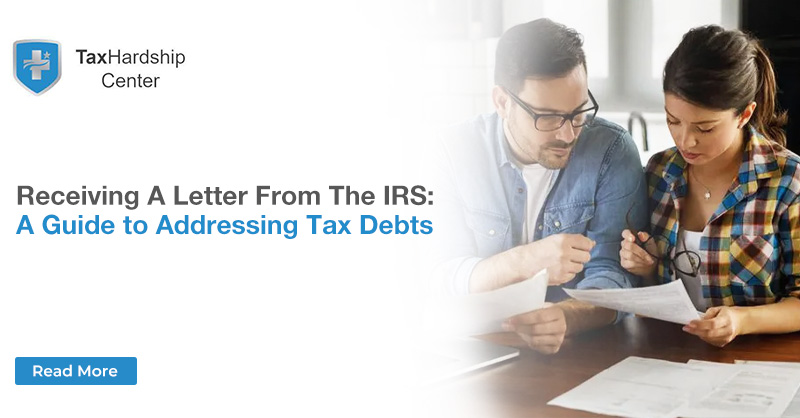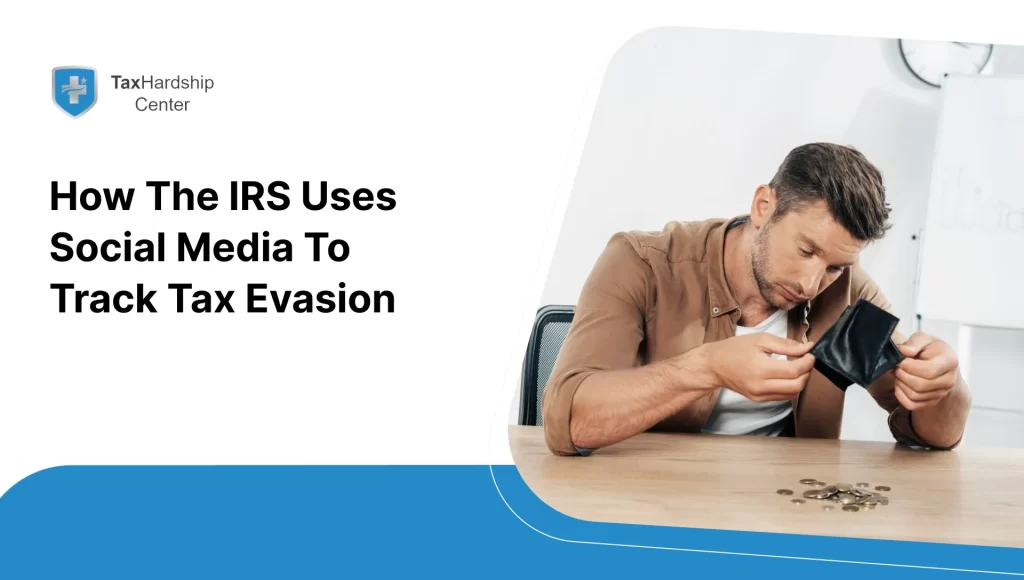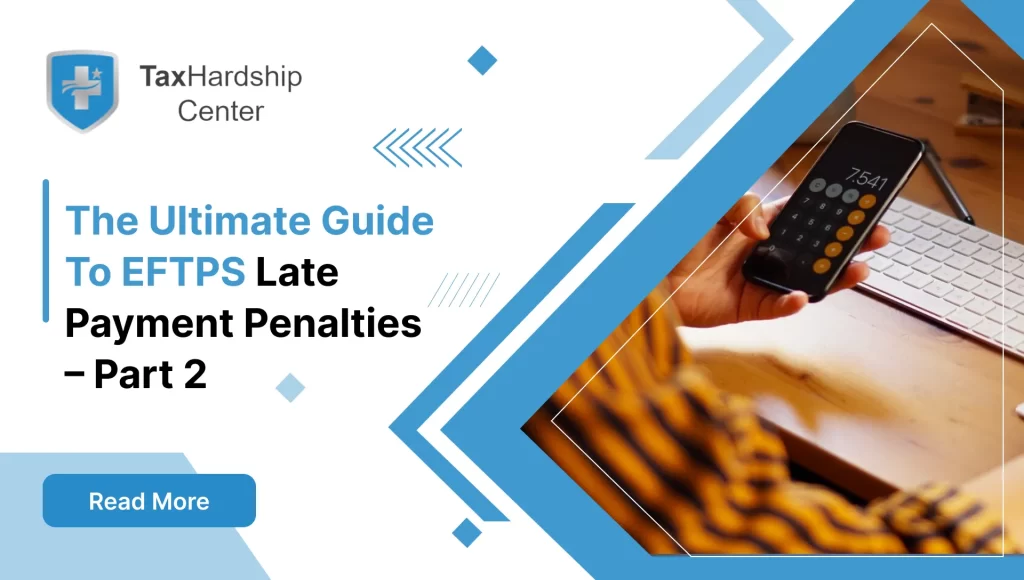Receiving a letter from the IRS regarding tax debts can be unsettling. While it’s essential to take action, understanding your options can be manageable. This guide aims to provide clear and practical steps for navigating such situations.
Whether you need clarification on the debt’s origin, disagree with the amount, or simply need help figuring out the following steps, this resource will equip you with the knowledge necessary to address the situation effectively. We’ll delve into standard IRS notices, potential solutions, and critical considerations for managing your tax debt responsibly.
Did You Receive A Notice From The IRS? Fret Not
At Tax Hardship Center, we understand the stress and uncertainty of receiving a notice from the IRS regarding unpaid taxes. Our experienced team is here to provide personalized assistance and guide you through every step of the process. From verifying the accuracy of the IRS notice to exploring your options for resolving the tax debt, we will work tirelessly to find the best solution for your unique financial situation. Let us alleviate your burden and help you regain control of your finances.
Contact us today to schedule a free 1-1 consultation and take the first step towards confidently resolving your tax issues.
Remember, open communication with the IRS is crucial. This guide empowers you to confidently approach the situation and make informed decisions about resolving your tax obligations.
Which Type Of Letter Did You Get?
The Internal Revenue Service (IRS), the federal agency responsible for tax collection and law enforcement, communicates with taxpayers through various notices and letters. These correspondences are sent out for numerous reasons. Still, when they relate to tax liabilities, each type of notice or letter has its unique purpose and necessitates a specific course of action by the recipient. Let’s delve into a detailed explanation of these notices and letters sent by the IRS regarding owed money:
Types of IRS Debt Notices and Corresponding Actions
1. CP14 Notice:
The CP14 is often the first notice you will receive if there’s an unpaid tax balance. It outlines how much you owe, the specific tax year for the balance, and how to pay. It also alerts you to the start of the collection process, which could include penalties and interest on the unpaid balance.
2. CP501 Notice:
Following the CP14, if the taxpayer has taken no action, the IRS sends the CP501. This is a reminder that the tax balance is still outstanding and requires attention. It’s essential to respond promptly to avoid further penalties.
3. CP503 Notice:
The CP503 is a second reminder sent by the IRS reminding you of your unpaid tax balance. If previous notices have been disregarded, this notice reaffirms the need for immediate payment or contact with the IRS to arrange a payment plan.
4. CP504 Notice:
This notice indicates a more urgent tone and implies that the IRS is moving closer to taking enforcement action. It serves as an intent to levy state tax refunds or other property if the balance still needs to be settled. This step is taken after previous notices have failed to prompt payment.
5. LT11 Notice:
As one of the final notices before the IRS takes enforced collection action, the LT11 Notice indicates the IRS’s intent to seize (levy) your assets, including wages, bank accounts, or other income or property. It also explains requesting a Collection Due Process hearing to dispute the levy.
6. CP90 / CP297 Notices:
These final notices signal the IRS’s intent to levy federal payments due to you, such as tax refunds and Social Security benefits. You are again allowed to request a hearing before the levy takes effect.
7. CP91 / CP298 Notices:
Similarly to CP90/CP297, these notices are a final alert that the IRS plans to levy up to 15% of your Social Security benefits to satisfy the tax debt. The urgency of these notices underscores the need for immediate action to prevent such levies.
8. Letter 1058 (LT11):
This is another final notice similar to the CP90/CP297, warning you of impending levies on your assets and income. It also outlines your right to a Collection Due Process hearing to present your case and discuss alternative solutions with the IRS.
Other Types of IRS Correspondences
Apart from notices related to tax debt, the IRS might also send letters for other reasons, such as:
- Notice of Proposed Changes: These notices inform you of adjustments the IRS is considering to your tax return, which may result in additional tax owed.
- Identity Verification Letters: If you suspect identity theft, you may receive a letter asking you to confirm your identity to protect your tax account.
Understanding Your IRS Notice
Regardless of the type of notice or letter you receive, reading and understanding the document’s intent is necessary. The notice will outline the specifics of your tax issue, including:
- The total amount due, including any interest and penalties.
- The tax year for which the money is owed.
- Detailed instructions on how to either make a payment or arrange for a payment plan.
- Deadlines by which you need to act to avoid further penalties or enforcement actions.
- Information on your rights as a taxpayer, including the right to appeal the IRS’s decision or to request a hearing.
Dealing with IRS Debt Notices
Being proactive is critical when dealing with IRS debt notices. If the balance is accurate and you can afford it, pay the amount owed by the deadline stated on the notice. If you can’t pay in full, consider other options, such as payment plans or an offer in compromise. If you disagree with the notice, you can dispute it through written correspondence or requesting a hearing.
In any case, ignoring IRS notices will only exacerbate your situation, possibly leading to liens on your property, seizure of assets, or garnishment of your wages. If you need help with how to proceed, seek assistance from a tax professional who can guide you through the process and help protect your rights. Remember, the IRS is typically willing to work with taxpayers to resolve their tax liabilities, but you must take the first step and respond to their notices promptly.
Immediate Steps After Receiving an IRS Letter
When the Internal Revenue Service (IRS) sends a letter indicating that you have a tax debt, it’s essential to approach the situation with urgency and care. These letters can often induce anxiety; however, the key is to remain calm and address the matter promptly. Here’s a more detailed guide on what to do if you find yourself facing correspondence from the IRS:
1. Don’t Panic, but Don’t Ignore
Upon receiving a letter from the IRS, it’s natural to feel worried or anxious. Despite these feelings, it’s crucial not to disregard communication. IRS letters usually contain important information regarding your taxes and often include a deadline by which you must respond. Ignoring the letter can lead to further complications, such as additional fines, accrued interest, or even legal proceedings. Instead, take a moment to calm yourself, then carefully open the letter and thoroughly read its content to understand what is being asked of you.
2. Verify the Accuracy
Erroneous notices from the IRS are not unheard of, and they can occur due to various reasons, such as incorrect data entries or misinterpretation of information. Before you take any further steps, confirm the validity of the claim. Start by scrutinizing the tax year, the amount the IRS claims you owe, and the justification they have provided for this debt. By comparing the figures and details in the notice against your tax records and past returns, you can determine if the charge is legitimate or if there has been a mistake.
3. Respond Promptly
Timely communication with the IRS is essential. Even if you disagree with the notice or find it contains errors, it is better to send a timely reply detailing your dispute or asking for clarification. It is essential to adhere to the provided deadlines for responses; failure to do so can worsen the situation, potentially reducing your options for resolution.
Addressing the Balance Owed
Once you have assessed and verified the IRS letter, there are several routes you can take to address any balance owed:
1. Full Payment
If your financial situation allows and the amount stated is correct, the most straightforward solution is to pay the entire balance by the due date specified in the IRS letter. This will help you avoid incurring additional interest and penalties. The IRS makes it relatively easy to remit payments—you can pay online, over the phone, or send a check via mail.
2. Payment Plans
If paying the total amount is not feasible, the IRS provides payment plan options. You can apply for a short-term payment plan if you pay off the balance within 120 days. Alternatively, a long-term installment agreement might be best when you require more time. However, be aware that interest and penalties will continue to accumulate on the unpaid balance throughout your payment plan.
3. Offer in Compromise
An Offer in Compromise (OIC) may be a viable solution for those who cannot manage the total tax liability or if paying it would lead to significant financial hardship. This program allows qualified taxpayers to settle their tax debts for less than the total amount owed. When deciding whether to accept OIC, the IRS considers several factors, including the taxpayer’s ability to pay, income, expenses, and asset equity.
4. Temporary Delay of Collection
If you’re experiencing financial hardship to the extent that you can’t pay any portion of your tax debt, the IRS may agree to delay collection activities temporarily. This is not a permanent solution, and it’s essential to recognize that the tax debt will remain. During this postponement, interest and penalties can still accrue, potentially increasing the amount you owe in the long run.
Each situation is unique, and it’s essential to consider your circumstances before deciding on the best course of action. Consult with the Tax Hardship Center to offer personalized guidance throughout the process. Remember, the most crucial step is acting quickly and responsibly to resolve your tax issues with the IRS.
Conclusion:
Receiving a letter from the IRS about a tax debt can be unsettling, but it’s crucial to approach it with a clear plan of action. This guide has outlined the various types of IRS notices related to tax debts, the steps to take upon receiving such a letter, and the options available for addressing the balance owed. Whether paying the total amount, setting up a payment plan, exploring an offer in compromise, or seeking a temporary collection delay, being proactive and responding promptly to IRS correspondence is essential. Remember, the IRS is often willing to work with taxpayers to find a resolution, but it’s up to you to take the first step toward resolving your tax issues.
Why Tax Hardship Center?
1. Hassle-Free Assistance:
Say goodbye to sleepless nights and endless tax-related stress. At the Tax Hardship Center, we believe in simplifying the complex. Our team of experts is dedicated to guiding you through every step of the process, ensuring that your tax concerns are met with precision and care.
2. 14-Day Money Back Guarantee:
We’re so confident in our ability to ease your tax worries that we offer a 14-day money-back guarantee. If, for any reason, you’re not satisfied with our service, we’ll gladly refund your investment. Your peace of mind is our top priority!
3. Free Consultation:
Are you curious about how we can transform your tax experience? Book a free consultation now! Our team will assess your situation, answer your questions, and provide free insights tailored to your needs.
4. Nationwide Coverage:
No matter which corner of the United States you call home, the Tax Hardship Center covers you. We proudly serve all 50 states, bringing our expertise to your doorstep. Wherever you are, our commitment to excellence follows.
FAQs:
1. What should I do if I receive a letter from the IRS about a tax debt?
Upon receiving a letter from the IRS regarding a tax debt, it’s essential not to panic and ignore the correspondence. Carefully read through the letter to understand the details of the debt and any deadlines for response or payment.
2. How can I verify the accuracy of the IRS notice regarding my tax debt?
You can verify the accuracy of the IRS notice by comparing the information provided in the letter, such as the tax year, the amount owed, and any justifications provided, with your tax records and past returns.
3. What are my options for addressing a tax debt owed to the IRS?
You have several options for addressing a tax debt owed to the IRS, including paying the total amount, setting up a payment plan, exploring an offer in compromise, or seeking a temporary delay of collection based on financial hardship.
4. How can I pay the tax debt owed to the IRS?
The IRS provides various payment options, including online payments, payments over the phone, or sending a check via mail. You can choose the method that is most convenient for you.
5. What should I do if I can’t afford to pay the total tax debt immediately?
Suppose you can only afford to pay the total tax debt after some time. In that case, you can explore options such as setting up a payment plan with the IRS or submitting an offer in compromise based on your financial situation.
6. Is it possible to temporarily delay the collection of a tax debt owed to the IRS?
Yes, in certain circumstances, the IRS may agree to temporarily delay collection activities if you’re experiencing financial hardship and can’t pay any portion of your tax debt. However, it’s essential to understand that interest and penalties may continue to accrue during this time.
7. Can I dispute the IRS notice if I believe an error exists?
Yes, if you believe there is an error in the IRS notice regarding your tax debt, you can dispute it through written correspondence or by requesting a hearing with the IRS to present your case.
8. Where can I seek assistance addressing a tax debt owed to the IRS?
Suppose you need assistance addressing a tax debt owed to the IRS. In that case, you can seek guidance from tax professionals or organizations like the Tax Hardship Center, which can provide personalized assistance.








